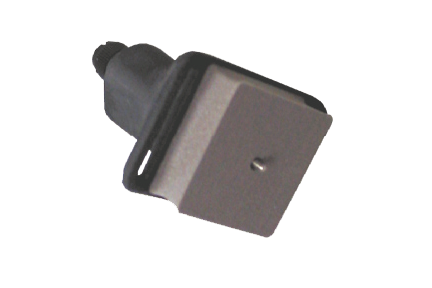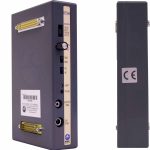The TSD190 connects directly to the STM100C stimulation module. Plunger activation force, width of stimulus pulse, and pulse repetition rate are established via the AcqKnowledge Set up Stimulator window. To output a stimulus waveform which has a precisely controlled rate-of-change in both onset and offset, ramp up or down the applied stimulus voltage to the TSD190. The TSD190 will respond to any kind of applied waveform, such as square, triangle, sinusoidal or arbitrary.
Visual or audio cues can be replaced or augmented with haptic feedback. For one example, see Kahol K., French, J., et al. (2006). Evaluating the Role of Visio-Haptic Feedback in Multimodal Interfaces through EEG Analysis. Augmented Cognition: Past, Present and Future. D. Schmorrow, K. Stanney and L. Reeves. Arlington, VA, Strategic Analysis, Inc.: 289-296.
TSD190 Haptic (Tactile) Stimulation Setup
1. Set up the hardware:
– Connect the TSD190 to the EXT STIM port on the front panel of the STM100C
– Set the controls on the STM100C: Source to OUT0, Level to 100%, POS, and DC
2. Launch AcqKnowledge.
– Open TSD190.gtl – download and open as Files of type: Graph Template (*.gtl)– Click Start to begin recording– This template produces a pulse every 2 seconds that triggers a click from the TSD190
3. Make adjustments if necessary:
– Adjust the throw of the TSD190 by turning the screw on top of the transducer
– Adjust pulse width and tap frequency under MP menu > Set Up Stimulator– optimal pulse width is between 4-15 msec– vary the frequency of the tap as desired


Stay Connected